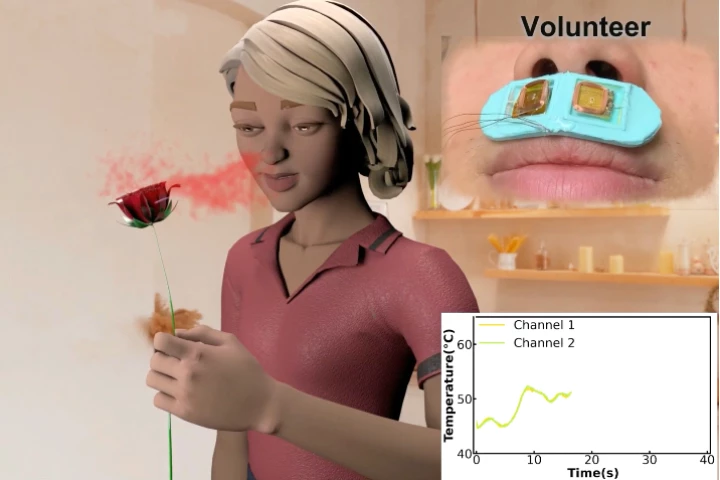City University of Hong Kong
-
Flying robots do have advantages over their ground-going counterparts, but they're not very energy-efficient. A new bot addresses that tradeoff by using a wing-assisted mechanism to hop instead of walking or flying in the traditional sense.
-
The Disney-esque hues on bluespotted ribbontail rays come from a unique arrangement of nanostructures, say researchers. The findings, along with those gleaned from studying blue sharks, could help lead to new chemical-free color techniques.
-
It might look hilarious in motion, but this remarkable aerial drone extends its battery life from a few minutes up to a full hour by bouncing around on a springy pogo tail. That incredible efficiency makes it attractive for a wide range of missions.
-
Scientists have demonstrated a new ultra-white ceramic material that drastically cools buildings, with record-high sunlight and heat reflectivity. The beetle-inspired material gets its ability from its nanostructure and should be easy to mass produce.
-
When fighting cancer, chemotherapy is still a bit of a blunt instrument. By combining it with soundwaves, however, researchers have found a way to turn it into more of a scalpel than a club, sparing damage to nearby tissue and the body as a whole.
-
A novel platinum-enhanced, light-activated compound kills cancer cells in a unique way without requiring oxygen, overcoming a limitation with existing light-based cancer therapies. It paves the way for the next generation of anti-cancer drugs.
-
While we've seen multiple attempts to produce real-world odors in VR environments, many have involved cumbersome wearable devices. Chinese scientists have developed a much more streamlined system, which is applied to the skin below the user's nose.
-
Last year we heard about an "electronic skin" developed at City University of Hong Kong, which delivers tactile sensations to wearers. The university has now gone one better, with an e-skin that both senses and reproduces users' touches.
-
While technology is making strides in absorbing our eyes and ears in virtual worlds, it’s harder to engage senses like touch. Engineers have now developed WeTac, a thin, wearable electronic "skin" that provides tactile feedback to users in VR and AR.
-
City University of Hong Kong researchers have accidentally discovered a first-of-its-kind high-entropy alloy that retains its stiffness, and actually becomes springier, instead of softening at high temperature. No other known metals behave this way.
-
As if the ray fishes weren't unusual enough already, it turns out that their sperm is also unique. Scientists have now created a robot inspired by those sperm, which may someday lead to smaller descendants that swim within the human body.
-
When someone has a problematic skin condition, the affected skin is typically either stiffer or softer than normal. A new sensor has been shown to detect such differences, potentially allowing doctors to diagnose problems more quickly and easily.
Load More











